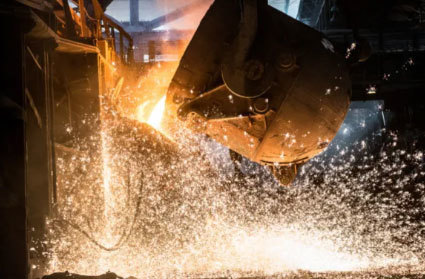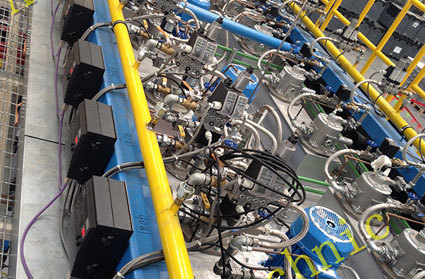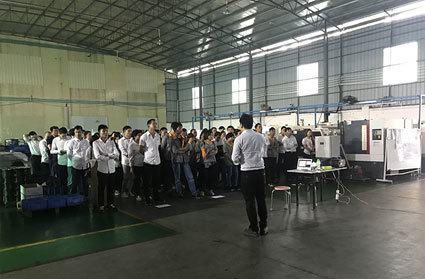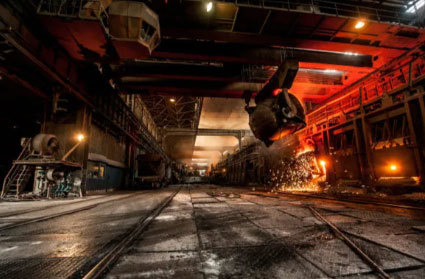Technical knowledge of electric furnace
Generally speaking, the high temperature of industrial furnace operation is prone to scald, burn and burn; high temperature molten salt and molten metal will explode when they meet water; coal gas and controlled atmosphere are explosive gases, oil circuit, oil tank and oil depot are flammable and explosive facilities, such as improper use, explosion and poisoning accidents will occur; the safety protection device of electric furnace fails, and electric shock will occur after contact; Cyanide in cyanide furnace is highly toxic; nitrate furnace heated to 550 ℃ above will produce spontaneous combustion; Nitrate and charcoal, carbon black combination will explode.
Industrial furnace repair environment is poor, many repair operations are carried out in the furnace, the space is very crowded, lack of natural lighting, poor ventilation conditions. Workers are not only affected by dust during operation, but also directly affected by high temperature, smoke, toxic gases and corrosion of chemical materials. Some furnaces (such as cupola) are as high as 10m-20m. Due to the narrow site of the furnace body, the repair work is high-altitude three-dimensional cross and multi-layer operation, which is very dangerous. Therefore, when operating and maintaining industrial furnaces, great attention should be paid to safety issues. Especially when organizing industrial furnaces, we must attach great importance to safety issues. Especially in the organization of industrial furnace repair or hot repair, more attention should be paid to these unsafe factors may cause the unfortunate accident.
How to improve the uniformity of the temperature of the fuel furnace?
A: the use of new combustion device
The use of high-speed temperature control burners to replace the original low-speed burners. The high-speed burner is the basic complete combustion of fuel and combustion-supporting air in the combustion chamber, and the high-temperature gas after combustion is ejected at a speed of 100-300 m/s, thereby enhancing convective heat transfer, promoting airflow circulation in the furnace, and achieving uniform furnace temperature. In addition, the temperature of the combustion gas at the outlet is reduced to close to the heating temperature of the workpiece by infiltrating the secondary air, which can realize the adjustment of the flue gas temperature, and has a significant effect on improving the heating quality and saving fuel.
Two: control the pressure in the furnace
When the pressure in the furnace is negative, for example, the pressure in the furnace is -10Pa, a suction wind speed of 2.9 m/s can be generated. At this time, a large amount of cold air will be sucked in at the furnace mouth and other loose places, resulting in an increase in the heat loss taken away by the flue gas from the furnace. When the pressure in the furnace is positive, the high temperature flue gas will escape from the furnace, which also leads to the heat loss of the flue gas.
Three: improve the degree of automation control.
Improper heating process often produce defects?
The defects caused by improper heating can be divided into: ① defects caused by the change of the chemical state of the outer layer of the blank due to the influence of the medium, such as oxidation, decarburization, carburizing, sulfurizing and copper infiltration. ② Defects caused by abnormal changes in the internal organizational structure, such as overheating, over-burning and no heat penetration. ③ due to the uneven distribution of temperature in the blank, the internal stress (such as temperature stress, tissue stress) is too large and the blank cracking, etc.
1. Decarbonization
Decarburization refers to the phenomenon that the carbon of the surface layer of the metal is oxidized at high temperature, so that the carbon content of the surface layer is significantly lower than that of the interior.
The depth of the decarburized layer is related to the composition of the steel, the composition of the furnace gas, the temperature and the holding time at this temperature. Heating in an oxidizing atmosphere is prone to decarburization, high carbon steel is prone to decarburization, and steel with a large amount of silicon is also prone to decarburization.
Decarburization reduces the strength and fatigue properties of the parts and weakens the wear resistance.
2. Carbon increase
The forgings heated by the oil furnace often have carburization on the surface or part of the surface. Sometimes the thickness of the carburizing layer is 1.5~1.6mm, the carbon content of the carburizing layer is about 1% (mass fraction), and the carbon content of local points even exceeds 2% (mass fraction), resulting in ledeburite tissue.
This is mainly in the case of heating of the oil furnace, when the billet is located close to the nozzle of the oil furnace or just in the area where the two nozzles cross spray fuel, because the oil and air are not mixed well, the combustion is incomplete, and as a result, a reducing carburizing atmosphere is formed on the surface of the billet, thereby producing the effect of surface carburization.
Carburization makes the machining performance of forgings worse, and it is easy to cut when cutting.
3. Overheating
Overheating refers to the metal billet heating temperature is too high, or in the specified forging and heat treatment temperature range of residence time is too long, or due to the thermal effect of the temperature rise is too high caused by the coarse grain phenomenon.
Carbon steel (sub-co-analysis or over-co-analysis steel) often appears after overheating. After overheating of martensitic steel, intragranular texture often appears, and tool and die steel is often characterized by primary carbide angular shape to determine the overheating tissue. After the titanium alloy is overheated, obvious β phase grain boundary and flat slender Weijmanite structure appear. Stone-like fracture or strip-like fracture will appear on the fracture of alloy steel after overheating. Overheated tissue, due to coarse grains, will cause a decrease in mechanical properties, especially impact toughness.
Generally, after normal heat treatment (normalizing and quenching), the structure of overheated structural steel can be improved and its performance can be restored. This overheating is often called unstable overheating. However, serious overheating of alloy structural steel cannot be completely eliminated by general normalizing (including high temperature normalizing), annealing or quenching. This overheating is often called stable overheating.
4. Over-burning
Over-burning means that the heating temperature of the metal blank is too high or the residence time in the high temperature heating zone is too long, and the oxygen and other oxidizing gases in the furnace penetrate into the gaps between the metal grains and oxidize with iron, sulfur, carbon, etc. The eutectic of fusible oxides is formed, which destroys the connection between grains and sharply reduces the plasticity of the material. If the metal is severely burned, it will crack with a light blow when it is removed, and transverse cracks will appear at the burned place when it is pulled long.
There is no strict temperature boundary between overburning and overheating. Generally, overburning is judged by the oxidation and melting of grains. For carbon steel, the grain boundary melts when it is over-fired, and when severe oxygen chemical die steel (high-speed steel, Cr12 steel, etc.) is over-fired, the grain boundary appears fishbone-like ledeburite due to melting. When the aluminum alloy is over-burned, the grain boundary melting triangle area and the remelting ball appear. Forgings burned, often can not be saved, had to scrap.
5. Heating crack
When heating large steel ingots with large cross-sectional dimensions and high-alloy and high-temperature alloy blanks with poor thermal conductivity, if the heating speed is too fast in the low-temperature stage, the blanks will produce large thermal stress due to the large temperature difference between inside and outside. In addition, at this time, the blank has poor plasticity due to low temperature. If the value of thermal stress exceeds the strength limit of the blank, a radial heating crack from the center to the periphery will be generated, causing the entire section to crack.
6. Copper brittle
Copper brittleness is cracked on the surface of forgings. When observed at high magnification, there is a light yellow copper (or copper solid solution) along the grain boundary distribution.
When the billet is heated, such as the remaining oxidized copper chips in the furnace, the oxidized steel is reduced to free copper at high temperature, and the molten steel atoms extend along the austenite grain boundary, weakening the relationship between grains. In addition, when the copper content in steel is high [>2% (mass fraction)], if heated in an oxidizing atmosphere, a copper-rich layer is formed under the iron oxide scale, which also causes steel embrittlement.
Previous
Previous:
recommend News
Equipment Development of Industrial Furnace
 Chinese
Chinese






